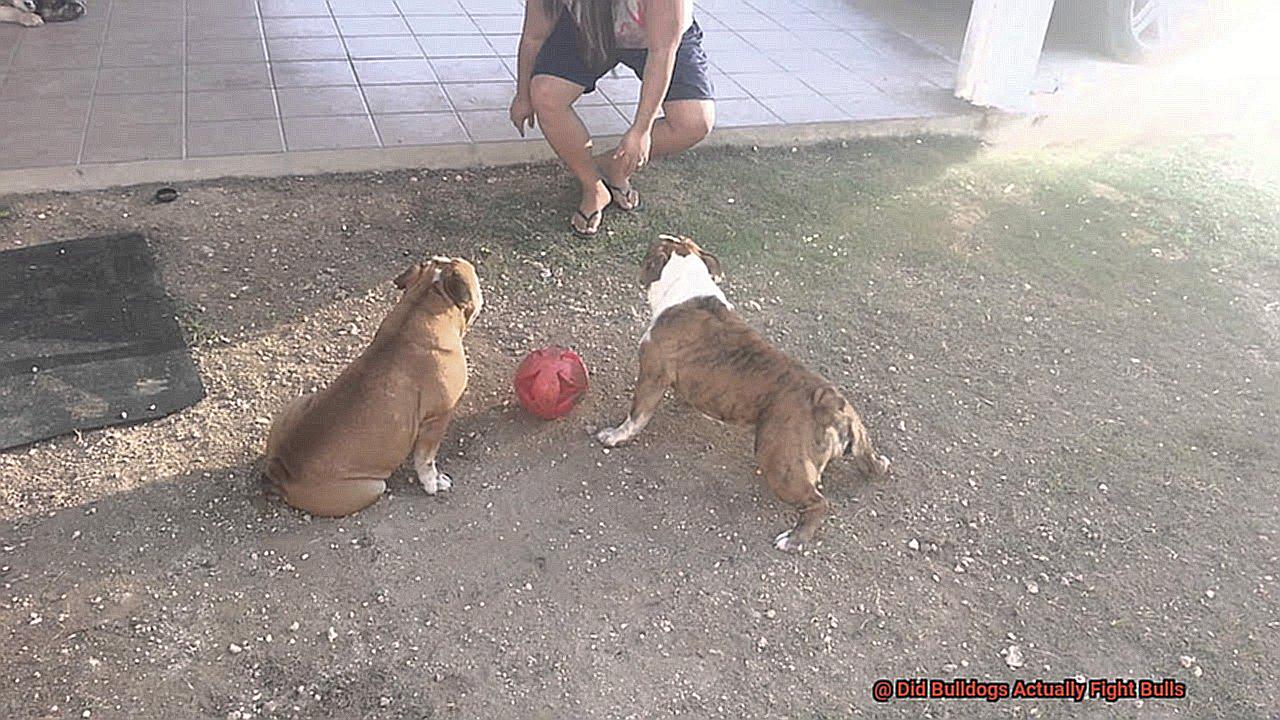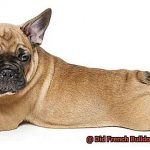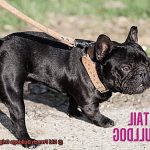Did Bulldogs Actually Fight Bulls?
Imagine a scene straight out of an action-packed blockbuster: a brawny bulldog fearlessly charging at a massive, furious bull in the heart of an ancient arena. It’s an image that has captured our imagination for centuries, but is it more fiction than fact? Did bulldogs truly engage in epic battles with bulls? In this blog post, we’re diving deep into history to separate truth from legend and uncover the real story behind bulldogs and their alleged bullfighting prowess.
While today we associate bulldogs with their adorable wrinkled faces and affectionate slobber, their lineage is anything but straightforward. These lovable creatures have a complex ancestry intertwined with a brutal and controversial past that spans generations. Join us on an exhilarating journey through time as we unravel the origins of bulldogs and shed light on their connection to the infamous sport of bull-baiting.
Prepare to have your assumptions shattered as we reveal the untold tale of bulldogs’ participation in a bloodsport that has simultaneously shocked and captivated audiences throughout history. From the gladiatorial arenas of ancient Rome to the gritty streets of medieval England, these tenacious canines played a role that both repelled and fascinated society. But what led them down this path? And how did they ultimately transform into beloved family pets?
So grab your favorite beverage, sink into your comfiest chair, and get ready for a rollercoaster ride through the captivating history of bulldogs and their entanglement with bull-baiting. Welcome to a world where bravery, resilience, and an unbreakable bond between humans and dogs collide in ways you never expected.
A History of Bull-Baiting and the Development of the Modern Bulldog Breed
Contents
- 1 A History of Bull-Baiting and the Development of the Modern Bulldog Breed
- 2 What is Bull-Baiting?
- 3 The Physical Characteristics of Bulldogs Used for Bull-Baiting
- 4 How Bull-Baiting Led to the Creation of the Modern Bulldog Breed
- 5 The Temperament of Modern Bulldogs vs. Their Ancestors
- 6 Are Bulldogs Prone to Aggression or Fighting?
- 7 Responsible Breeding and Training are Key in Shaping a Dog’s Temperament
- 8 Why Do People Love Bulldogs So Much?
- 9 Conclusion
Join us on a journey through time as we explore the captivating history of bull-baiting and its role in the development of the modern Bulldog breed.
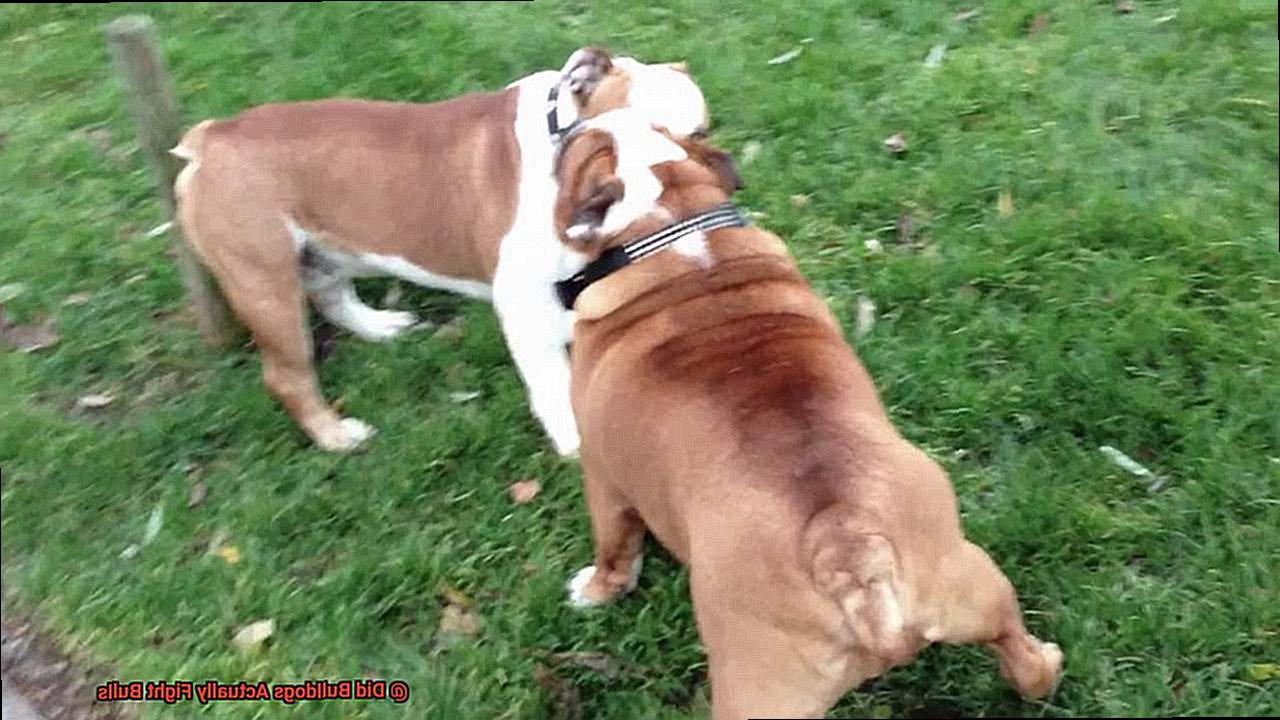
Bull-Baiting – A Brutal Spectacle
- The popularity of bull-baiting in medieval Europe, particularly in England.
- Ancient origins and the rise of bull-baiting in England during the 13th century.
- The objective of bull-baiting and its practical purposes as a working dog.
The Bulldog’s Tenacity and Strength
- The specific traits that made bulldogs well-suited for bull-baiting.
- Physical characteristics and temperament required for the sport.
- Intense training and conditioning methods used to prepare bulldogs for the ring.
The Transition from Warriors to Companions
- The decline of bull-baiting and the shift in demand for bulldogs.
- Selective breeding and the refinement of physical traits for companionability.
- Challenges faced in transforming bulldogs into domesticated pets.
The Modern Bulldog Breed
- The characteristics that distinguish modern bulldogs from their ancestors.
- Docile temperament, friendly nature, and suitability as family pets.
- Responsible breeding and training practices to ensure their well-being.
What is Bull-Baiting?
Today, we embark on an enthralling journey into the captivating history of bull-baiting and its profound influence on the evolution of our beloved French Bulldogs. Join me as we uncover the origins, brutal contests, and eventual ban of this blood sport that shaped the tenacity and strength of these delightful companions.
The Origins of Bull-Baiting
- Tracing back to ancient times, bull-baiting was practiced in various cultures.
- English bull-baiting gained popularity during the 13th century.
- Bulldogs were specifically bred for their tenacity and strength in this blood sport.
The Brutal Contests
- Bulls were tethered or chained while Bulldogs were released to attack.
- Bulldogs aimed to immobilize the bull by latching onto its snout or ears.
- Both animals displayed courage, endurance, and brute strength.
Spectacle and Entertainment
- Bull-baiting events attracted large crowds and were considered thrilling spectacles.
- Betting and gambling added excitement and financial gain for participants.
Cruelty Concerns and Opposition
- Critics raised concerns about animal welfare and cruelty in bull-baiting.
- Bulldogs suffered severe injuries, while bulls faced immense physical harm.
- Animal welfare campaigners led to the eventual ban of bull-baiting in 1835 through the Cruelty to Animals Act.
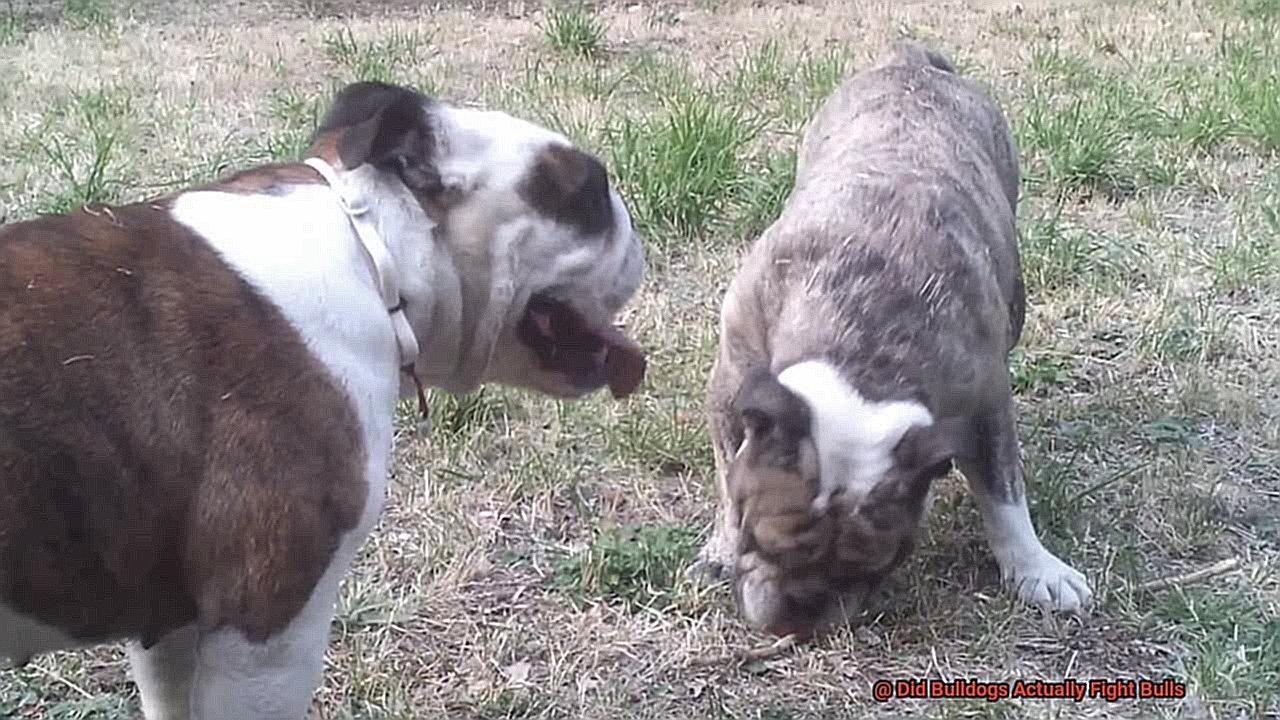
Legacy and Transformation
- The ban marked a turning point in public sentiment towards animal cruelty.
- Bulldogs transitioned from warriors to gentle companions cherished by families worldwide.
- French Bulldogs, descendants of the original Bulldog breed, now thrive as affectionate and lovable pets.
The Physical Characteristics of Bulldogs Used for Bull-Baiting
In the fierce world of bull-baiting, Bulldogs were the ultimate warriors. These courageous canines were specifically bred for their physical characteristics that made them formidable opponents to the mighty bulls. Today, as proud owners of French Bulldogs, it’s fascinating to uncover the traits that have been passed down through generations.
Muscular and Stocky Build
Bulldogs were built like tanks, with a muscular and stocky physique that made them unstoppable forces. Their low center of gravity gave them stability and made it nearly impossible for the bull to throw them off. This sturdy build made them ideal for taking on such powerful adversaries.
Powerful Jaws
With wide and powerful jaws, Bulldogs had an incredible grip that allowed them to latch onto the bull’s nose or neck and hold on tightly. This tenacious grip was crucial in immobilizing the bull during the intense battles. It’s no wonder our French Bulldogs still possess strong jaws today.
Brachycephalic Faces
One of the most distinctive features of Bulldogs used for bull-baiting is their pushed-in faces, known as brachycephalic. This unique facial structure served a purpose in the arena – it made it harder for the bull to injure them during combat. The shortened snout and compact face provided protection against potential goring or injuries.
Loose Skin and Thick Coats
To withstand the brutal attacks from the bull’s horns, Bulldogs developed loose skin and thick coats that served as a natural armor. This protective layer reduced the risk of serious injury and allowed these courageous canines to continue their fight without fear.
Strong and Determined Temperament
Bull-baiting required dogs with unwavering determination and an unyielding spirit. Bulldogs possessed a strong temperament that enabled them to confront and engage with aggressive bulls fearlessly. This inherent bravery is still evident in our French Bulldogs today, making them loyal and fearless companions.
While modern Bulldogs have been bred for companionship rather than bull-baiting, some physical traits from their warrior days still remain. Their muscular bodies and pushed-in faces are a constant reminder of their impressive heritage.
How Bull-Baiting Led to the Creation of the Modern Bulldog Breed
How Bull-Baiting Led to the Creation of the Modern Bulldog Breed
Hey there, French Bulldog enthusiasts. Did you know that our beloved breed has a fascinating history that dates back to medieval England? In this blog post, we’ll explore how bull-baiting, a popular sport in those times, played a crucial role in shaping the modern Bulldog breed we know and love today.
The Origins: From Mastiffs to Bulldogs
To understand the development of the Bulldog breed, we have to go back in time to ancient Mastiffs. These large and powerful dogs were bred for hunting and guarding purposes. Over the years, they were selectively bred for their strength and tenacity, laying the foundation for the Bulldog’s unique characteristics.
Enter Bull-Baiting: A Brutal Sport
Bull-baiting was a thrilling and brutal sport that gained popularity in the 13th century. It involved tying a bull to a stake and releasing Bulldogs to attack and immobilize it. The Bulldogs’ task was to grip onto the bull’s nose and hold on tight, showcasing their strength and determination.
From Gladiator to Guardian
Bull-baiting wasn’t just a form of entertainment; it was also a test of the Bulldog breed’s strength and endurance. Bulldogs proved themselves time and again, displaying unwavering resilience in the face of danger. Their courage and tenacity made them ideal gladiators in the bull-baiting arena.
The Decline of Bull-Baiting and the Transformation of Bulldogs
As attitudes towards animal cruelty changed in the 19th century, bull-baiting was eventually banned in 183This left Bulldogs without a purpose, but their journey didn’t end there. People recognized their unique qualities and began transforming them into the lovable companions we cherish today.
French Bulldogs: The Modern Bulldogs
Through careful breeding and selection, Bulldogs were transformed into the modern Bulldog breed we know today, including the adorable French Bulldogs. While their ancestors were fierce warriors, modern Bulldogs have retained their muscular build and distinctive facial features while tempering their aggression.
Conclusion
So, the next time you cuddle up with your French Bulldog, remember that their ancestry can be traced back to the brave warriors of the bull-baiting arena. Their history is a testament to their strength, resilience, and adaptability. Let’s cherish our furry friends and honor their rich heritage.
The Temperament of Modern Bulldogs vs. Their Ancestors
Bulldogs, known for their distinctive appearance and lovable nature, have come a long way from their ancestors’ days as fierce fighters in bull-baiting arenas. In this blog post, we will explore the temperament of modern Bulldogs and compare it to their ancestors, shedding light on the factors that have shaped their evolution into the friendly and affectionate companions we know today.
The Ancestral Bulldog: Brave and Fearless
In the past, Bulldogs were bred for bull-baiting, which required them to have unwavering courage, strength, and tenacity. Their ancestors were assertive and fearless dogs, unafraid to confront large, aggressive animals like bulls. This heritage endowed them with a determined temperament that enabled them to excel in their historical role.
Shift in Purpose: From Fighters to Family Pets
With the abolition of bull-baiting in the 19th century, Bulldogs faced a change in function. Their purpose shifted from being fierce fighters to becoming loyal companions and family pets. This transition influenced breeders to prioritize qualities such as docility, loyalty, and sociability when selecting breeding pairs.
The Modern Bulldog: Friendly and Affectionate
As a result of selective breeding and the shift in purpose, modern Bulldogs have evolved into friendly and affectionate companions. They are known for their gentle nature and love for human interaction. Modern Bulldogs thrive on attention and are often described as great family pets due to their fondness for children. Their calm and patient demeanor makes them excellent companions for individuals of all ages.
Retaining Ancestral Traits: Stubbornness and Loyalty
Despite the changes in temperament over time, Bulldogs still retain some of their ancestral characteristics. They are notorious for their stubbornness, which can be both endearing and challenging for owners. Additionally, modern Bulldogs possess a protective instinct and can be fiercely loyal to their families.
Are Bulldogs Prone to Aggression or Fighting?
In this blog post, we’ll explore the intriguing history of Bulldogs, their transformation from fearless fighters to cherished family companions, and why they are not prone to aggression or fighting. So grab a cup of coffee, sit back, and let’s dive in.
The Evolution of Bulldogs:
Bull-baiting Origins:
- Bulldogs were originally bred for bull-baiting, a brutal sport where they would immobilize bulls by latching onto their noses.
- This selective breeding for aggression and tenacity led to their reputation as formidable fighters.
Shift Towards Companionship:
- In the 19th century, bull-baiting was banned in England, leading to a change in Bulldogs’ purpose.
- Breeders shifted their focus towards creating a more docile and friendly temperament suitable for companionship.
The Gentle Nature of Bulldogs:
Modern Temperament:
- Through careful breeding practices, modern Bulldogs have shed their aggressive tendencies.
- They are now known for their calm, gentle, and affectionate nature.

Common Misconceptions:
- It is crucial to dispel the misconceptions that Bulldogs are inherently aggressive or prone to fighting.
- Aggression in Bulldogs is often a result of poor breeding, lack of socialization, or mistreatment by owners.
Responsible Ownership:
Training and Socialization:
- Early training and socialization are vital for shaping a Bulldog’s behavior.
- Positive reinforcement techniques and exposure to various environments can help foster a well-adjusted and friendly pet.
Bulldog-Friendly Families:
- Bulldogs are renowned for their patience and tolerance, making them great companions for families with children.
- However, supervision is necessary to ensure a harmonious relationship between Bulldogs and kids.
Mental and Physical Stimulation:
- Bulldogs, like any other breed, require mental and physical stimulation to prevent boredom and potential behavioral issues.
- Regular exercise, interactive toys, and engaging training sessions can keep Bulldogs happy and well-behaved.
Recognizing Individual Differences:
- While Bulldogs as a breed are not prone to aggression or fighting, it is essential to recognize that each dog is unique.
- Owners should understand their Bulldog’s limitations and avoid situations that may trigger fear or discomfort.
Responsible Breeding and Training are Key in Shaping a Dog’s Temperament
French Bulldogs are known for their adorable appearance and affectionate nature, making them a popular choice for families and individuals alike. However, like any dog breed, their temperament can vary depending on various factors, including genetics and upbringing. In this article, we will explore how responsible breeding and training play a pivotal role in shaping a French Bulldog’s temperament, ensuring they become well-rounded and delightful companions.
Responsible Breeding – The Foundation of Temperament
Selecting Parent Dogs with Desirable Traits
- Breeders prioritize breeding dogs with stable and friendly temperaments.
- By intentionally selecting parent dogs with positive temperaments, breeders increase the likelihood of passing down these traits to the offspring.
- Avoiding breeding dogs with aggressive tendencies reduces the chances of offspring exhibiting similar behaviors.
Training – Unlocking a French Bulldog’s Potential
Early Socialization and Training
- Proper socialization and training from an early age are crucial in shaping a French Bulldog’s temperament.
- Exposing them to various experiences, people, and environments helps them develop confidence and adaptability.
- Positive reinforcement training methods such as reward-based techniques are highly effective in promoting desired behaviors.
Consistency, Positive Reinforcement, and Clear Boundaries
- Consistent training provides clear expectations for French Bulldogs, helping them understand acceptable behaviors.
- Positive reinforcement techniques using treats, praise, and rewards create positive associations with training and foster obedience.
- Setting clear boundaries ensures that French Bulldogs understand their place within the family hierarchy.
The Impact of Training Methods
The Power of Positive Reinforcement
- Positive reinforcement methods encourage desired behaviors through rewards, increasing motivation and cooperation.
- Treats, praise, and playtime can reinforce obedience and foster a strong bond between dog and owner.
The Dangers of Harsh Training Techniques
- Harsh or punitive training methods can have detrimental effects on a French Bulldog’s temperament.
- Physical punishment and aversive techniques can lead to fear, anxiety, and aggression.
- Choosing trainers who advocate for positive reinforcement methods is essential for promoting a well-balanced temperament.
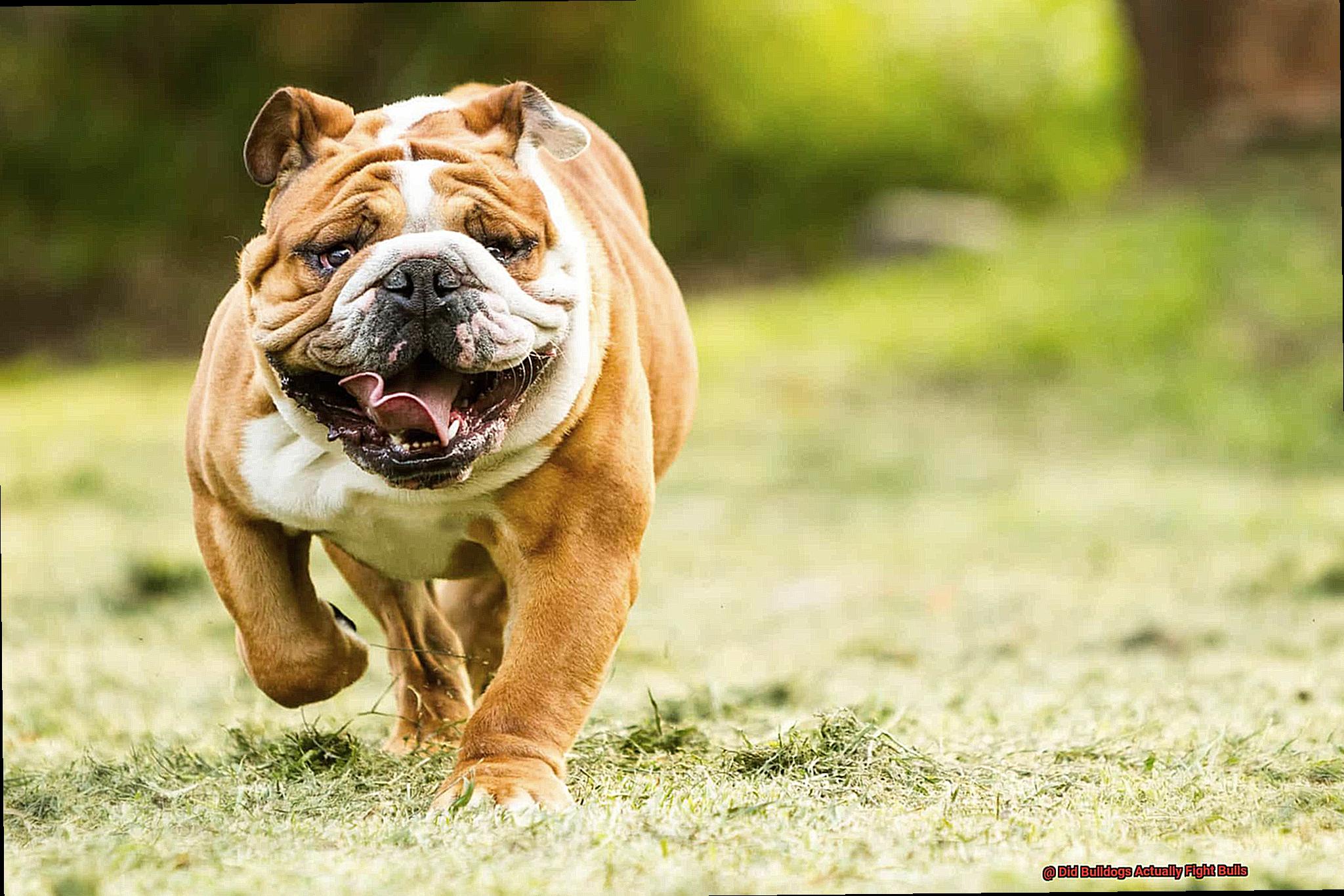
The Benefits of Responsible Breeding and Training
Well-Balanced Temperament
- Proper breeding practices and training ensure that French Bulldogs possess a well-balanced temperament.
- Well-trained dogs are more confident, friendly, and adaptable in various situations, reducing the likelihood of aggressive or fearful behaviors.
Support from Responsible Breeders
- Responsible breeders provide ongoing support and guidance to puppy buyers.
- They offer advice on training techniques, recommend professional trainers, and provide resources for continued education on dog behavior.
- This support maximizes the chances of puppies developing a well-rounded temperament.
Why Do People Love Bulldogs So Much?
Their unique and distinctive appearance, friendly temperament, adaptability, entertainment value, historical significance, and low maintenance qualities all contribute to their widespread appeal. In this blog post, we will delve deeper into these reasons why people love bulldogs so much.
- Adorable Appearance: Bulldogs have a wrinkled face, pushed-in nose, and muscular build that make them instantly recognizable and often described as “cute” or “adorable.” Their distinct look gives them a charm that is hard to resist.
- Friendly and Affectionate: Bulldogs are known for their loyalty and devotion to their owners. They form strong bonds with their human companions and make great family pets. Their friendly and affectionate nature makes them excellent companions.
- Calm and Relaxed Demeanor: Bulldogs have a calm and relaxed demeanor, making them well-suited for apartment living or households with children. They are not overly energetic or hyperactive, preferring to lounge around and enjoy the company of their owners.
- Gentle and Patient: Bulldogs are often referred to as “nanny dogs” because of their ability to tolerate and interact well with children. They have a gentle nature and exhibit patience even in the face of playful antics.
- Entertaining Quirks: Bulldogs have a sense of humor and can be quite entertaining. Their quirky behaviors such as snorting, snoring, and their characteristic waddle often bring laughter and joy to their owners.
- Resilient Spirit: Despite their stocky build, bulldogs have a resilient and determined spirit. They may appear lazy at times but can show surprising bursts of energy when motivated or excited. This duality adds to their charm.
- Rich History and Cultural Significance: Bulldogs are often associated with British culture and are considered a symbol of determination and resilience. Their historical context adds depth and meaning to the love people have for them.
- Low Maintenance: Bulldogs have a relatively low maintenance grooming routine compared to other breeds. Their short coat requires minimal brushing, and they do not shed excessively. This aspect appeals to individuals who prefer dogs that are easy to care for.
- Popular in Popular Culture: Bulldogs have become popular in movies, advertisements, and even as mascots for sports teams. Their iconic status further contributes to their popularity among dog lovers.
rWO4mtLl0ZQ” >
Conclusion
In conclusion, it is clear that bulldogs did indeed engage in bullfighting.
These tenacious canines fearlessly faced off against bulls, demonstrating their strength and courage in the arena. With their powerful jaws and unwavering determination, bulldogs were well-suited for this dangerous sport.
Their ability to hold onto a bull’s snout or ear was crucial in immobilizing the animal and preventing it from causing harm. The spectacle of a bulldog taking on a massive bull captivated audiences, showcasing the indomitable spirit of these remarkable dogs.
However, as times changed and society evolved, the practice of bulldog versus bull fights gradually diminished. Today, we celebrate the bulldog for its loyalty, affectionate nature, and distinctive appearance rather than its historical connection to bullfighting.
Nevertheless, we must acknowledge and appreciate the breed’s remarkable past as fearless combatants in the ring.
